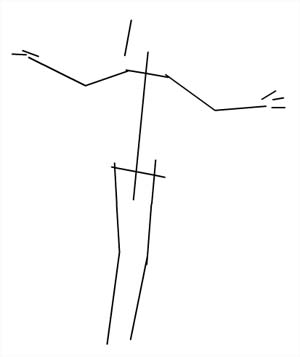
The animation, Wind gathering, explores a new rotoscoping technique: drawing with straight lines over video key frames and in-betweening.
The Japanese flute, the Shakuhachi, was played by first Komuso (mendicant priests), with a tengai (woven reed basket) over their heads.
Wikipedia
Wearing the basket was a symbol of detachment from the world – an absence of specific ego.
.
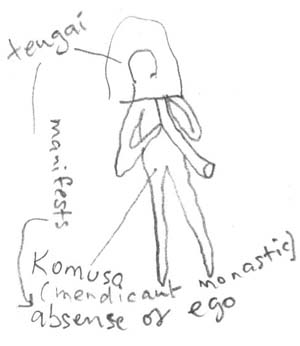
I noticed when Rupert Summerson played this instrument, his eyes were closed and his whole body moved gently, meditatively.
Rupert played this music in response to a Weddel seal emerging from a hole in the ice to breathe. He saw the seal in a video work by artist Connie Samaras, exhibited last September at the Jonathan Smart Gallery (Christchurch). Rupert’s music is a meditation on the seal breathing. I associate the sound with Antarctic wind.
The image of a basket over a head connects with a previous animation, Value?
Here, a woman’s head is covered by the body of another creature – a microscopic creature I imagined:
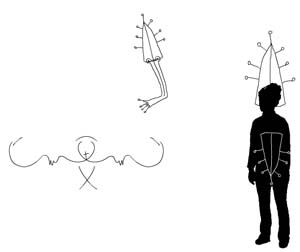
Absence of ego hood suggests livelihood, which suggests animation.
I had been seeking ways to draw connections between humans and the natural world. The idea of placing another creature’s body over the woman’s head was suggested by hoods I saw covering heads of characters by William Kentridge, in his animated films at this year’s Sydney Biennale. Kentridge’s animation also suggested the idea of animating cut-outs of words. Kentridge’s work references Russian protests. Collaged text can also suggest a protest voice for endangered species. Endangered species include our selves.
The shape of the form emerging from the woman’s head is that of an Antarctic marine plant. It also echoes the form of the Shakuhachi that emerges from beneath the Komusa’s hood:
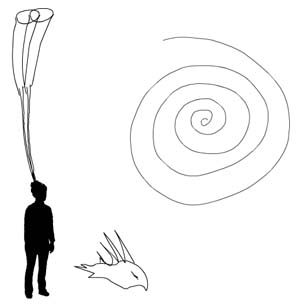
Reflecting on connections between symbolic forms is of interest in relation to a task I have recently set myself: to identify recurring gestures and images in the animations I have made from conversations so far.
Within this animation, Value?, the coil and fish also appear, as they have in other contexts.
Visiting the Australian Museum yesterday, I recognised another image that appears in some of my animated conversations:
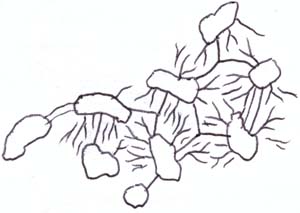
This is my sketch of a scanning electron micrograph, photographed by Sue Lindsay of the Australian Museum, of cells surrounding a Seed bug’s scent gland. These cells form part of a system for dispersing smell. The forms suggests their function of scent transmission. It suggests to me also transmission of senses between humans, conversing through gesture and images. The lines between cells suggest lines of connection that can occur between people moving together. They also suggest the sense of connection some describe feeling with the natural world. They also suggest lines internet inter-connections.
Last Saturday I filmed Vikki Quill moving words: mountain, river and Antarctica. I will try the new rotoscoping technique to animate some of that footage.
What is my purpose in using this animation technique?
*To trace gestural expression of how one feels connection with the earth
*To identify gestures moved and drawn that recur in how others express this
*To find ways for viewers to see the connections I have found between them.
I wrote the following using the voice of one conceiving a work which has yet to fully materialize (hence the tense):
For ideological, conceptual, aesthetic and practical reasons, I turned to the internet when conceiving Antarctic animation. The process and the product of its research would be transparent and accessible. Free to view and contribute to, it would continue to evolve beyond the formal research period.
Like an Antarctic expeditioner, I would challenge myself to work in an elemental space. I would make do and recycle materials at hand. I would use, as much as possible, open source software and systems. Minimal lines would reflect the elemental space of Antarctica. Animated gestures giving voice to the ice would be succinct and quick to upload.
Analysis of animations would define a set of filters through which to view them in different ways. A machine for looking would select and play the animations in different sequences according to the filters selected. Code would be written to detect animation files tagged to mark recurring imagery and movement qualities. Animations would also be tagged for viewing in the order in which they were composed, as a narrative, as well as randomly.
